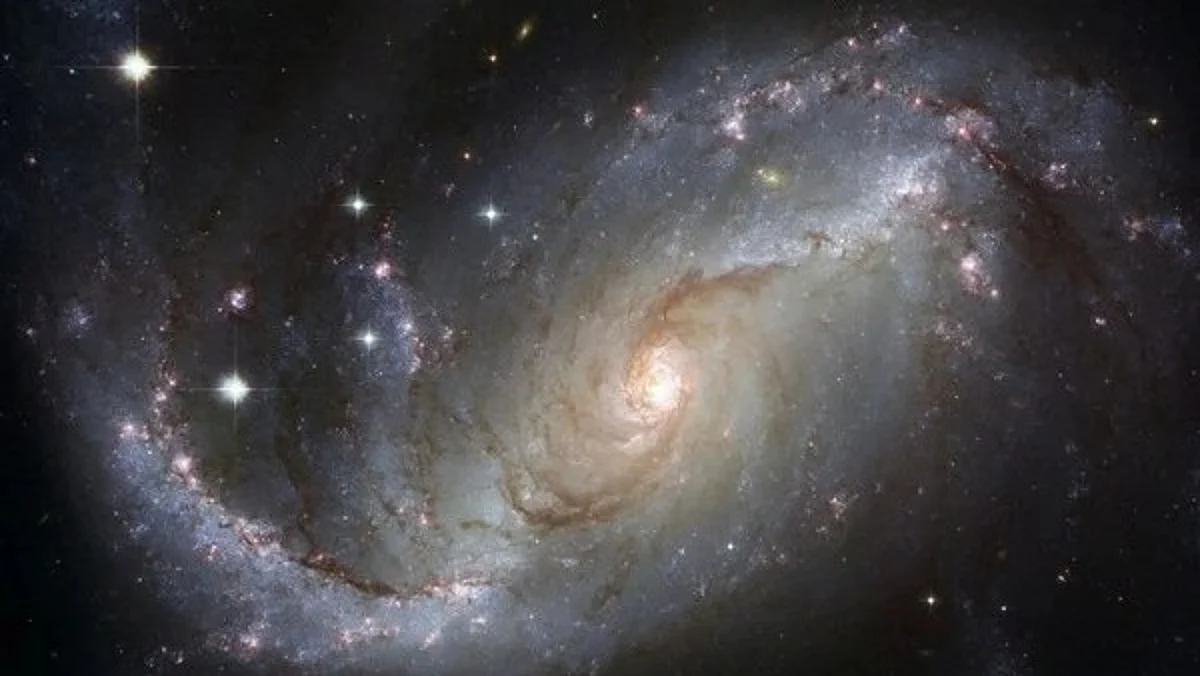Science
Astronomers Unveil Evidence for Possible Planet Y Beyond Neptune

Astronomers have presented compelling evidence suggesting the existence of a previously unknown planet, referred to as Planet Y, in the far reaches of our solar system. This finding, detailed in a study published in the Monthly Notices of the Royal Astronomical Society: Letters, is based on unusual orbital characteristics of distant objects within the Kuiper Belt, a region populated by icy celestial bodies beyond Neptune.
The researchers observed the distinct tilt in the orbits of approximately 50 Kuiper Belt objects, which indicates the potential influence of a hidden planetary body. Lead author Amir Siraj, a doctoral candidate at Princeton University, explained that while this paper does not confirm the discovery of a new planet, it raises significant questions that a planet could resolve. “One explanation is the presence of an unseen planet, probably smaller than the Earth and probably bigger than Mercury, orbiting in the deep outer solar system,” he stated.
The concept of undiscovered planets beyond Neptune is not new. The search for a so-called Planet X dates back to the early twentieth century, following the discovery of Neptune in 1846. Initially, Pluto was considered a candidate for Planet X when it was discovered in 1930, but its small size later led to its reclassification as a dwarf planet.
Planet Y and the Mystery of the Solar System’s Tilt
Unlike the previously hypothesized Planet Nine, which is believed to have a mass five to ten times that of Earth and orbits much farther from the Sun, Planet Y is thought to be a smaller body. Siraj’s team found that the tilt of the solar system, measured at over 80 times the Earth-Sun distance, is approximately 15 degrees. This tilt cannot be explained by the gravitational influence of a passing star or traditional planetary formation theories.
“It was quite a surprise to find that the solar system suddenly appears to be tilted by about 15 degrees, and this is what sparked the Planet Y hypothesis,” Siraj noted. The team utilized computer simulations to analyze existing models and concluded that neither Planet Nine nor any other known body could account for this tilt.
They propose that Planet Y could possess a mass similar to that of Mercury or Earth, orbiting at a distance of between 100 to 200 times that of the Earth-Sun distance, with a minimum orbital tilt of 10 degrees relative to the known planets. Despite the intriguing implications of these findings, the existence of Planet Y remains unconfirmed.
Statistical Significance of the Findings
The research highlights that the statistical significance of the observed tilt, based on the data from the roughly 50 Kuiper Belt objects, falls within a range of 96 percent to 98 percent. This suggests a strong likelihood that an unseen planetary body may be influencing their orbits.
While the quest for new celestial bodies continues, the study of Planet Y contributes to a growing understanding of the solar system’s architecture and the potential for more discoveries in the unexplored regions beyond Neptune. As astronomers further investigate these phenomena, the search for evidence confirming the existence of Planet Y will remain a key focus in the coming years.
-

 World5 months ago
World5 months agoSBI Announces QIP Floor Price at ₹811.05 Per Share
-

 Lifestyle5 months ago
Lifestyle5 months agoCept Unveils ₹3.1 Crore Urban Mobility Plan for Sustainable Growth
-

 Science4 months ago
Science4 months agoNew Blood Group Discovered in South Indian Woman at Rotary Centre
-

 World5 months ago
World5 months agoTorrential Rains Cause Flash Flooding in New York and New Jersey
-

 Top Stories5 months ago
Top Stories5 months agoKonkani Cultural Organisation to Host Pearl Jubilee in Abu Dhabi
-

 Sports4 months ago
Sports4 months agoBroad Advocates for Bowling Change Ahead of Final Test Against India
-

 Science5 months ago
Science5 months agoNothing Headphone 1 Review: A Bold Contender in Audio Design
-

 Top Stories5 months ago
Top Stories5 months agoAir India Crash Investigation Highlights Boeing Fuel Switch Concerns
-

 Business5 months ago
Business5 months agoIndian Stock Market Rebounds: Sensex and Nifty Rise After Four-Day Decline
-

 Sports4 months ago
Sports4 months agoCristian Totti Retires at 19: Pressure of Fame Takes Toll
-

 Politics5 months ago
Politics5 months agoAbandoned Doberman Finds New Home After Journey to Prague
-

 Top Stories5 months ago
Top Stories5 months agoPatna Bank Manager Abhishek Varun Found Dead in Well









